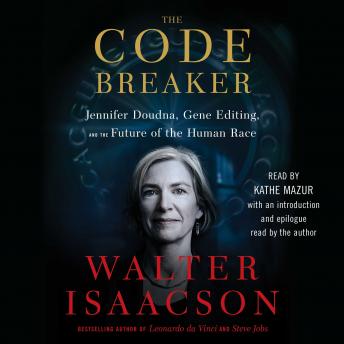

Even though her high school counselor told her girls didn’t become scientists, she decided she would.ĭriven by a passion to understand how nature works and to turn discoveries into inventions, she would help to make what the book’s author, James Watson, told her was the most important biological advance since his codiscovery of the structure of DNA. As she sped through the pages, she became enthralled by the intense drama behind the competition to discover the code of life. When she read it on a rainy Saturday, she discovered she was right, in a way. She put it aside, thinking it was one of those detective tales she loved. When Jennifer Doudna was in sixth grade, she came home one day to find that her dad had left a paperback titled The Double Helix on her bed. In addition to his account of Doudna’s life, an introduction to molecular biology, and applications for CRISPR (including fighting COVID-19), Isaacson provides a cautious consideration of the moral issues and risk of misuse engendered by a biotechnology that potentially provides a mechanism to “hack our own evolution.” CRISPR has the power to eliminate sickle-cell anemia and possibly other diseases, but should it also be employed for the enhancement of intelligence, muscle strength, or beauty? Who decides? Science can save us or destroy us, depending on how we wield it.The bestselling author of Leonardo da Vinci and Steve Jobs returns with a “compelling” (The Washington Post) account of how Nobel Prize winner Jennifer Doudna and her colleagues launched a revolution that will allow us to cure diseases, fend off viruses, and have healthier babies. The book’s cast of complex characters is headlined by Jennifer Doudna, winner of the 2020 Nobel Prize in Chemistry, and the versatile RNA molecule. The lure of profit, academic prizes, patents, and historical legacy also looms large. In Isaacson’s splendid saga of how big science really operates, curiosity and creativity, discovery and innovation, obsession and strong personalities, competitiveness and collaboration, and the beauty of nature all stand out. Here he introduces Jennifer Doudna, a pioneer of the revolutionary gene-editing tool CRISPR, a biotechnology based on the defense system bacteria use to combat viruses.

In his previous biographies of Einstein, Steve Jobs, and da Vinci, Isaacson has demonstrated a soft spot for scientist-innovators and a deft touch for explicating their work.


 0 kommentar(er)
0 kommentar(er)
